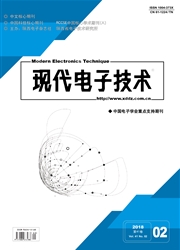

 中文摘要:
中文摘要:
埋入堆叠芯片技术在实现封装小型化的同时,增加了封装电学设计的复杂性。以一个数字系统为例,详细阐述了埋入堆叠芯片封装结构的电学设计过程。利用电磁仿真软件提取了该封装结构的寄生参数,并通过S参数、延时、反射分析,确定长绑定线为影响链路信号质量的关键因素,其影响直接限制了埋入堆叠芯片技术的应用范围。运用RLC传输线模型分析了长绑定线造成大的信号质量衰减的原因。最后,提出了一种大幅减短绑定线长度并提升链路电学性能的优化结构,拓展了此技术在高速领域的应用。眼图的对比结构表明,新结构能降低链路的阻抗失配,减小信号延时,并大大改善高速信号的质量。
 英文摘要:
英文摘要:
The embedded stacked-die technique miniaturizes the package outline of a multi-chip system,but increases the electrical design complexity of the package structure. The electrical simulation and optimization process of the package design of a digital system which utilized this technique is elaborated in this paper. The parasitic parameters of the package structure were extracted by electromagnetic simulation software. By S-parameter,time delay and reflection analysis,the bonding wires were de-termined to be the critical factors that affect the signal quality and significantly limit the application of embedded stacked-chip technique. The phenomena were then explained by RLC model. In the last,an optimized structure was proposed to reduce the length of bonding wires and enhance the electrical performance of the whole channel. The contrast result according to the eye dia-gram indicates that the new structure has reduced the link impedance mismatching and time delay,and improved the quality of high-speed signals.
 同期刊论文项目
同期刊论文项目
 同项目期刊论文
同项目期刊论文
 期刊信息
期刊信息
